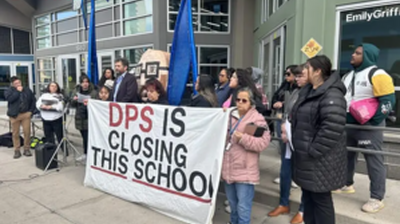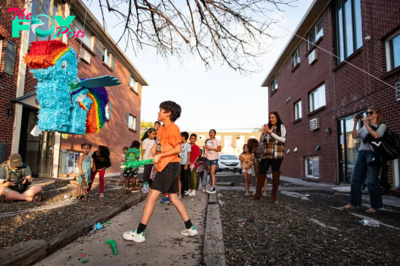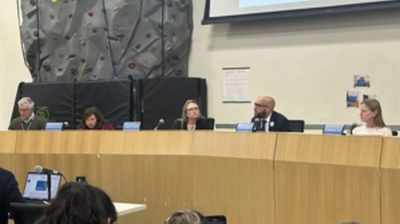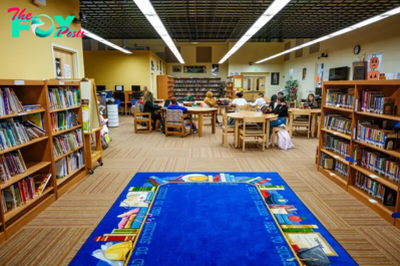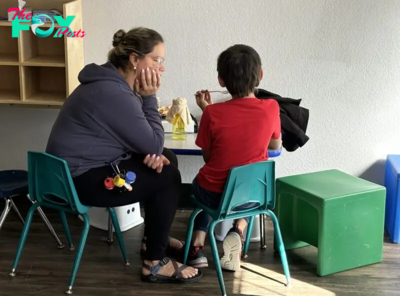Education
1800s-era schoolhouse in tiny Colorado town will reopen to students after sitting vacant for decades
GARCIA — Time has barely ticked forward in a 150-year-old schoolhouse near Colorado’s southern edge, where hundreds of dusty books line wooden shelves, worn desks lie entangled in a clumsy pile and a few faded white numbers and letters linger on the dark green chalkboard.
Stepping inside is almost like walking into a time capsule — one that a local school district is ready to reopen to restore and return the building to its original use: educating kids who live in a remote pocket of Colorado, many from low-income families.
“You think about everything that we’re trying to do with education now and then you look in here and you think about everything they were doing with what they had then,” said Toby Melster, superintendent of Centennial School District R-1, while visiting the schoolhouse in February. “The ones that did teach the kids here were probably saying the same thing (as us): ‘If I only had, if I only had.’”
The San Luis district of nearly 190 students in preschool through 12th grade is part of a project to both preserve and modernize the Garcia Grade School — which could date back as far as the 1860s, experts say — so that students can once again begin learning in the same rooms as generations of kids did before them. Melster imagines creating a learning center with computer stations where students can tackle assignments and members of the public can sit down to conduct research and a meeting space where teachers can walk kids through lessons in a spot rife with history.
The building, owned by Centennial School District, has largely sat vacant for about three decades. As it shows its age with cracks in the walls and water damage, the team behind its renovation is sprinting against time to revive it.

The school is one in a string of historical structures dotting the San Luis Valley that Colorado Preservation Inc. has added to its list of Most Endangered Places, which tracks old buildings that are neglected or close to crumbling and that communities are rallying to save. With the right care and attention, those buildings can have a second chance at flourishing while continuing to give their communities a portal to the past.
Others that have made the Most Endangered Places list in the area include nine mission churches, one of which is on the verge of collapse, that have long been the religious and cultural center of their communities throughout the San Luis Valley. Barbara Darden, principal of Parker-based firm Scheuber + Darden Architects, nominated those churches to the list and is also helping revitalize the Garcia Grade School while juggling a variety of other historical preservation projects.

Among them is the People’s Market in San Luis, a former family-owned grocery store dating to the 1860s, which is in the process of becoming a co-op where community members can shop for fresh food and learn about traditional foods in a community kitchen, Darden said.
Another project on her radar is a former bank, which is about 100 years old and now partially collapsed. The downtown building has deteriorated significantly over the past year and a half, Darden said, and she’s racing to help transform it into affordable housing, a restaurant and a youth recreation center.
“The buildings aren’t what’s important,” Darden said. “It’s the people and the culture, and the buildings tell that story, help interpret that story of a town or a community.”
Weaving together the old and the new
Garcia, which is about 18 miles southwest of San Luis, was a Hispanic settlement established before Colorado was designated a state in 1876, according to Julie Chacon, executive director of the Sangre de Cristo National Heritage Area.
Enticed by land offerings for settlement, Hispanic settlers flocked to the area at the end of the Mexican-American War in 1848 when the region belonged to the New Mexico Territory, according to a historical structure assessment of the Garcia Grade School. Garcia, originally named Plaza de los Manzanares, was established in 1849.
The community today has few buildings — the school is one of the last remaining — and likely fewer than 50 people who call it home. Traces of the original settlement are still visible, with a plaza, or square, that anchored Garcia right in front of the school designed to protect residents from outsiders, including Native Americans and white people.
The school shuttered in 1963 after a wave of lone-standing schools across Colorado consolidated, prompting closures of rural schools in the late 1940s and 1950s, the historical structure assessment notes. Kids were then bused to Centennial Union School in San Luis, and the schoolhouse pivoted to a library and housed a Head Start Program until 1995.

It has since been dormant.
Chacon encouraged the school district during the pandemic to push for the old school to become designated as one of Colorado’s most endangered places and restore it so that students lacking internet access in Costilla County — one of the poorest in the state — would have a reliable spot to study.
Centennial School District plans to install a cellphone tower near the school property using state grant funds, which will open up internet access to families throughout the valley, Melster said.
Darden is optimistic about the condition of the Garcia Grade School. At first glance, the building appears dilapidated with an adobe exterior covered in cracks, a door frame where paint has withered away and part of a ceiling that is starting to cave.
But look deeper and striking details reflecting the building’s history emerge: three layers of flooring, the lowest of which has bark on the back of it, which means it was made locally from a tree that was cut down and sliced; original mud plaster that is still intact; a lava stone foundation, common in many of the region’s buildings; and a pop of bright blue paint behind some trim, which is indicative of early hand-mixed paints, according to Darden.
-

 Education1d ago
Education1d agoWhat would it mean if President-elect Trump dismantled the US Department of Education?
-

 Education4d ago
Education4d agoPhiladelphia students have a new reading and writing curriculum − a literacy expert explains what’s changing
-

 Education4d ago
Education4d agoWhy school police officers may not be the most effective way to prevent violence
-

 Education1w ago
Education1w agoCampus diversity is becoming difficult to measure as students keep their race and ethnicity hidden on college applications
-

 Education1w ago
Education1w agoFederal judge rules that Louisiana shalt not require public schools to post the Ten Commandments
-
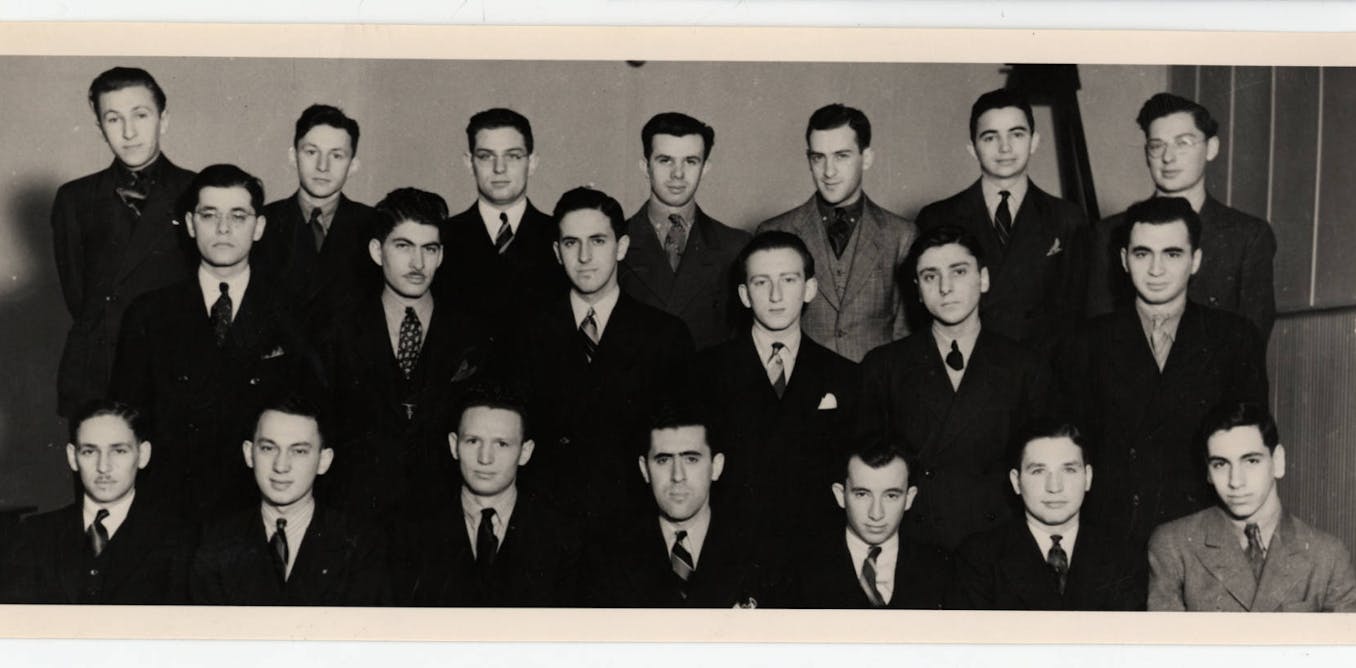
 Education1w ago
Education1w agoCampuses are ground zero in debates about antisemitism − but that’s been true for 100 years
-

 Education1w ago
Education1w agoSocioeconomic status explains most of the racial and ethnic achievement gaps in elementary school
-

 Education1w ago
Education1w agoMothers, metaphors and dyslexia: What language reveals about the challenges of a child’s learning disability
